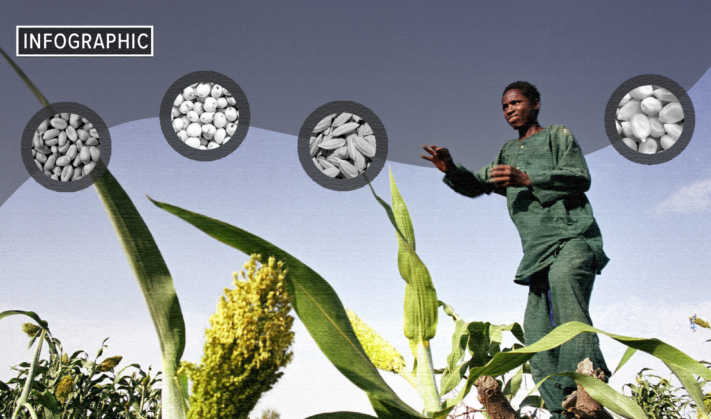Read full article by Marie Toulemonde@ The Africa Report Photo Credit:
The uncertainty created by the war in Europe has caused an unprecedented surge in the price of cereals, of which Ukraine and Russia are among the main exporters to the continent. What impact will Washington’s oil embargo have on Moscow? What if Brussels follows? Due to the lack of visibility, the international markets panicked and prices soared.
On 7 March, the price of a tonne of soft wheat on the futures market reached €422.50, more than double the price of what it had been a year earlier. This is a disaster in the making for Africa, which is consuming more and more imported grain, especially since inflation is back.
In 2008 and 2009, the continent paid a high price for soaring cereal prices and several countries were the scene of “food riots.” In West Africa, which was particularly affected, governments reacted by launching vast programmes aimed at ensuring food self-sufficiency and introducing all sorts of initiatives to develop the local rice industry. More than 10 years later, however, the results are still “mixed,” says Patricio Mendez del Villar, a specialist in international rice economics at the Centre de Coopération Internationale en Recherche Agronomique pour le Développement (CIRAD). In particular, he believes that these policies “have lacked coherence and consistency, and reflect a rather too ‘urban’ vision, far removed from local realities.”
Millet, sorghum and fonio: the alternative
On the contrary, the CIRAD researcher advocates diversifying the response and not relying entirely on the rice agro-industry. “It is a mistake to think that heavy investment in infrastructure to intensify rice growing and improve the quality of processing will be enough to develop the enormous agricultural resources available on the African continent and ensure food security,” he says.
As a matter of fact, Africa has varieties of cereals – known as “indigenous” – such as millet, sorghum, fonio and teff that are just as nutritious as Western and Asian grains. The latter became popular during the colonial period, and then benefited from exporting countries’ proactive – dare we say aggressive – policies. This unfair competition, in the case of European wheat, was fuelled by the massive subsidies granted to the major cereal producers under the Common Agricultural Policy.
However, traditional seeds appear to be better adapted to dry ecosystems, which cover 45% of the continent. Beyond the latest upheavals in international markets, they could also prove strategic in adapting to the effects of climate change and in the fight against food insecurity.
The Intergovernmental Panel on Climate Change (IPCC) highlighted local African communities that have already converted their maize fields to sorghum and millet in order to compensate for the lack of rain in its 28 February report. The International Crops Research Institute for the Semi-Arid Tropics (ICRISAT) has also made this its focus and is campaigning – through its “Smart Food” programme launched in 2013 – to bring them back into fashion via education, research and even cooking shows, such as the Smart Food Reality Show that has been broadcast in Kenya since 2017.

